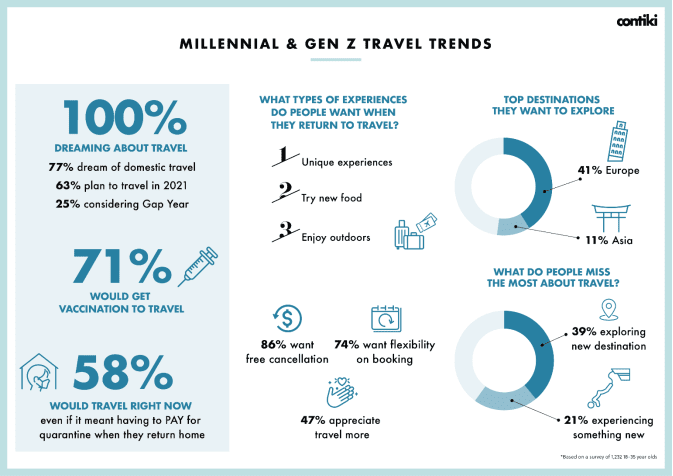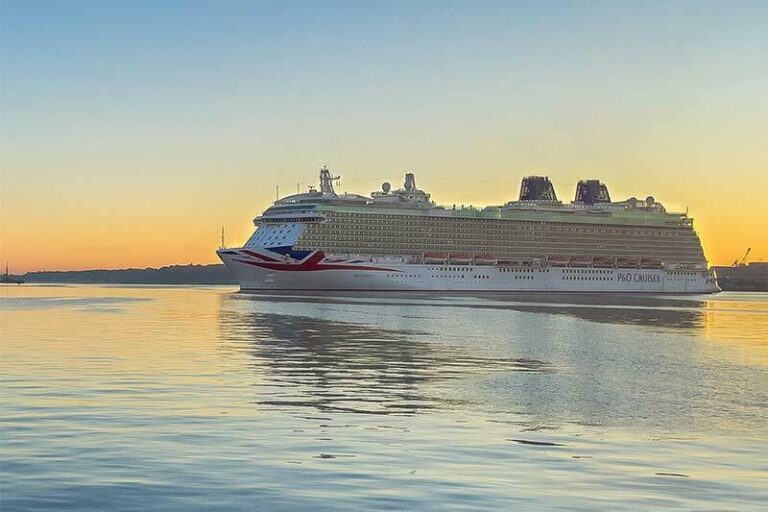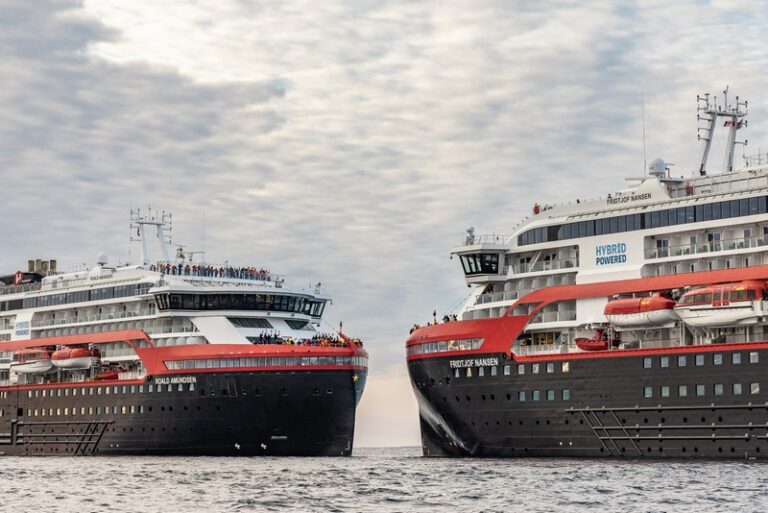The Ultimate Guide to United States Cruise Ports
Introduction to United States Cruise Ports
Embarking on a cruise journey is an exciting experience that often begins at a cruise port. The United States boasts a plethora of cruise ports, each with its unique charm and offerings. This section serves as an introduction to United States cruise ports, providing insights into what to expect at a cruise port and the importance of planning ahead.
What to Expect at a Cruise Port
A cruise port, often bustling with energy, serves as the gateway to your cruise vacation. It’s where the ship docks, allowing passengers to embark and disembark. At these ports, you can expect a myriad of services and facilities such as embarkation and disembarkation terminals, luggage handling services, parking facilities, and often, tourist information centers.
The atmosphere at a cruise port is usually filled with anticipation and excitement as travelers prepare to embark on their journey. Depending on the port, you may find local vendors selling goods, entertainers performing for the crowds, and a variety of dining options.
Some of the larger United States cruise ports may also feature shopping centers, hotels, and other tourist attractions within close proximity. However, the amenities and services can greatly vary from port to port. For detailed information on specific ports, consider visiting our cruise ports guide.
The Importance of Planning Ahead
Planning ahead can significantly enhance your cruise experience, starting from the moment you arrive at the cruise port. Being prepared can help ensure a smooth embarkation process and allow you to make the most of your time at the port.
Understanding the layout of the port, the available facilities, and the embarkation process can save you time and prevent unnecessary stress. It’s beneficial to research transportation options to and from the port, potential traffic or weather conditions, and if necessary, nearby accommodations.
Furthermore, if the port is located in a tourist-friendly area, you might want to arrive a day or two earlier to explore local attractions before setting sail. This extra time can also serve as a buffer in case of unexpected travel delays.
Planning ahead is particularly crucial for ports that you’ll be visiting during your cruise. Researching about these ports and their attractions can help you decide how to spend your day before the ship sets sail again. Whether you’d like to explore on your own or take part in an organized shore excursion, having a plan can help you maximize your experience in each port.
In conclusion, understanding what to expect at a cruise port and the importance of planning ahead are crucial first steps in preparing for your cruise vacation. The following sections will delve deeper into the various United States cruise ports, offering insights on what each port has to offer.
East Coast Cruise Ports
The East Coast of the United States is a popular region for cruise ports, offering a variety of unique destinations for vacationers. This section provides an overview of four major East Coast cruise ports: Miami, Florida; Fort Lauderdale, Florida; New York, New York; and Charleston, South Carolina.
Miami, Florida
Known as the Cruise Capital of the World, Miami is a bustling port city with a vibrant mix of cultures and activities. The Port of Miami is located near downtown Miami, offering easy access to a variety of restaurants, shops, and attractions. Vacationers can explore the art deco architecture of South Beach, visit the lively neighborhoods of Little Havana and Wynwood, or simply relax on the beautiful beaches. For more information about Florida cruise ports, visit our Florida cruise ports page.
Fort Lauderdale, Florida
Fort Lauderdale, often referred to as the Venice of America, is another popular cruise port in Florida. The port is conveniently located near the Fort Lauderdale-Hollywood International Airport and offers a range of activities for cruise passengers. Vacationers can take a water taxi tour of the city’s canals, visit the historic Stranahan House Museum, or enjoy the sun and surf at Fort Lauderdale Beach.
New York, New York
New York City, one of the world’s most iconic cities, is also a significant cruise port. The Manhattan Cruise Terminal is centrally located on the Hudson River and offers easy access to many of the city’s top attractions. Visitors can explore Times Square, visit the Statue of Liberty and Ellis Island, or catch a Broadway show. The city’s diverse culinary scene also offers a wide range of dining options.
Charleston, South Carolina
Charleston, South Carolina, offers a charming Southern experience for cruise passengers. The city’s rich history, well-preserved architecture, and renowned restaurant scene make it a captivating port of call. Visitors can explore the city’s historic district, visit Fort Sumter, or take a leisurely stroll through the beautiful Magnolia Plantation and Gardens.
Each of these United States cruise ports offers its own unique experiences and attractions. By planning ahead and researching each port, vacationers can ensure they make the most of their time in each location. For more detailed information on these and other cruise ports, please visit our comprehensive cruise ports guide.
Gulf Coast Cruise Ports
The Gulf Coast is home to several popular United States cruise ports that provide access to a variety of exciting destinations. The region’s warm climate and proximity to the Caribbean make it an appealing choice for cruisers. The ports of Galveston, Texas, New Orleans, Louisiana, and Tampa, Florida are among the most frequented in the area.
Galveston, Texas
Galveston, situated off the Texas Gulf Coast, serves as a gateway to the Western Caribbean. The port’s historic charm blends seamlessly with modern amenities, offering visitors a unique blend of past and present. The city’s vibrant downtown area, filled with shops, restaurants, and attractions, is a mere stone’s throw from the cruise terminal. Find out more about Galveston and other Texas cruise ports.
New Orleans, Louisiana
New Orleans is renowned for its rich cultural heritage, distinctive music, and exceptional cuisine. The city’s cruise port is closely located to the legendary French Quarter, allowing cruisers to experience the lively atmosphere and iconic jazz music before setting sail. Its strategic location also makes it a convenient departure point for cruises to the Western Caribbean.
Tampa, Florida
Tampa offers a diverse array of attractions for cruisers. From the bustling Channelside Bay Plaza, which houses numerous eateries and shops, to the city’s aquarium and historic Ybor City, visitors have plenty to explore. Tampa’s cruise port enables easy access to the Western and Southern Caribbean. For more on what Florida’s ports have to offer, visit our dedicated page on Florida cruise ports.
Each of these Gulf Coast cruise ports provides a unique starting point for your cruise journey. With a wide range of attractions, restaurants, and experiences available at each port, there’s no shortage of adventures to be had before you even set foot on your cruise ship. For more information on these and other United States cruise ports, explore our comprehensive cruise ports guide.
West Coast Cruise Ports
The West Coast of the United States is home to several popular cruise ports with a wealth of attractions for vacationers. Diverse in culture and scenic views, these ports offer a unique blend of city life, natural beauty, and historical significance.
San Diego, California
San Diego, California, is a favorite among cruise enthusiasts due to its beautiful weather, sandy beaches, and vibrant culture. The port is conveniently located near the city’s downtown area, making it easy for vacationers to explore numerous attractions such as the famous San Diego Zoo, Balboa Park, and the historic Gaslamp Quarter.
| Distance from Port to Downtown | Local Attractions |
|---|---|
| 1.2 miles | San Diego Zoo, Balboa Park, Gaslamp Quarter |
Los Angeles, California
Los Angeles, often referred to as the ‘Entertainment Capital of the World,’ is a major port on the West Coast. Its proximity to Hollywood and other iconic landmarks makes it an exciting destination for cruise passengers. From the Hollywood Walk of Fame to the Getty Center, there’s no shortage of things to see and do.
| Distance from Port to Downtown | Local Attractions |
|---|---|
| 25 miles | Hollywood Walk of Fame, Getty Center, Griffith Observatory |
Seattle, Washington
The cruise port of Seattle, Washington, serves as a gateway to the Pacific Northwest and Alaska. The city’s scenic beauty, coupled with its rich cultural scene, makes it a must-visit. Key attractions include the Space Needle, Pike Place Market, and the Chihuly Garden and Glass exhibit.
| Distance from Port to Downtown | Local Attractions |
|---|---|
| 1.5 miles | Space Needle, Pike Place Market, Chihuly Garden and Glass |
Each of these ports offers a unique experience and a chance to explore some of the best cities on the West Coast. Before your arrival, it’s advisable to research the local attractions, dining options, and transportation facilities to make the most of your visit. For more information on United States cruise ports, check out our comprehensive cruise ports guide.
Alaska Cruise Ports
Anchored in scenic beauty, Alaska’s cruise ports are a gateway to awe-inspiring landscapes and captivating wildlife. The ports of Anchorage, Juneau, and Skagway are among the most popular in Alaska, offering a range of activities and attractions that capture the essence of this magnificent state.
Anchorage, Alaska
The largest city in Alaska, Anchorage serves as the starting point for many Alaskan cruises. This port city offers a unique blend of urban amenities and natural beauty. From the port, it’s a short trip to downtown Anchorage, where visitors can explore museums, shops, and restaurants. For those looking to connect with nature, the nearby Chugach Mountains and Tony Knowles Coastal Trail offer ample opportunities for hiking and wildlife viewing.
- Distance from port to town: Approximately 2 miles
- Popular attractions: Anchorage Museum, Tony Knowles Coastal Trail, Chugach State Park
Juneau, Alaska
Juneau, the capital of Alaska, is known for its stunning natural attractions. The city’s cruise port is located near the downtown area, providing easy access to local restaurants, shops, and historical sites. One of Juneau’s must-visit destinations is the Mendenhall Glacier, a massive ice formation located just a short drive from the city. Other popular activities include whale watching and exploring the Tongass National Forest.
- Distance from port to town: Approximately 1 mile
- Popular attractions: Mendenhall Glacier, Tongass National Forest, Alaska State Museum
Skagway, Alaska
Steeped in history, Skagway is a small town with a big personality. This port town played a central role in the Klondike Gold Rush and maintains much of its 19th-century charm with preserved buildings and vintage streetcars. From the port, it’s a short walk to the historic downtown area, where visitors can explore the Skagway Museum and Archives or take a ride on the White Pass & Yukon Route Railroad.
- Distance from port to town: Less than 1 mile
- Popular attractions: Klondike Gold Rush National Historical Park, White Pass & Yukon Route Railroad, Skagway Museum and Archives
By familiarizing yourself with these United States cruise ports, you can better plan your Alaskan cruise experience. Whether you’re interested in history, wildlife, or stunning landscapes, these ports offer something for every traveler. For more information on other cruise port destinations, check out our cruise ports guide.
Tips for Exploring Cruise Ports
When you’re exploring the various United States cruise ports, it’s essential to have a game plan to make the most out of your visit. Whether you’re a food lover, a history buff, or a sightseeing enthusiast, there’s plenty to do and see. This section provides some tips on dining options, local attractions, and transportation options at the cruise ports.
Dining Options
One of the pleasures of traveling is the opportunity to taste local cuisine. In most cruise ports, you’ll find a range of dining options, from high-end restaurants to local street food vendors. Do some research ahead of your trip to find the best-rated eateries in the area. You can also ask for recommendations from locals or fellow cruisers to discover hidden gems.
Keep in mind that dining experiences can vary greatly from port to port. For instance, you might find fresh seafood dishes in coastal cities, while in other areas, local specialties might include spicy cuisine, BBQ, or unique desserts. Always be adventurous and open to trying new foods!
Local Attractions
Each of the United States cruise ports boasts its unique attractions. Some ports might be known for their historical landmarks, others for their vibrant arts scene, and others still for their stunning natural beauty. When planning your itinerary, consider what interests you the most.
If you’re a history enthusiast, look for ports with rich historical sites, museums, or cultural landmarks. If you’re a nature lover, consider ports near national parks or nature reserves. For more detailed information on what to expect, check out our cruise ports guide.
Transportation Options
Getting around in a new city can seem daunting, but with a little planning, it can be quite convenient. Most cruise ports offer a variety of transportation options, including taxis, public buses, bike rentals, and even walking tours. Depending on the size of the city and the distance to the main attractions, you might choose one or more of these options.
Before you arrive, research the most reliable and cost-effective modes of transport in each port. Also, check whether it’s possible to buy a day pass for unlimited public transportation. This can be a cost-effective way to travel, especially if you’re planning to visit multiple sites in one day.
Remember, exploring the United States cruise ports is a big part of the cruise experience. With a little forethought and planning, you can ensure a memorable and enjoyable visit to each port on your itinerary.
Common Questions About Cruise Ports
When planning a cruise vacation, it’s common to have several questions about the various United States cruise ports you’ll be visiting. Here, we address some of the most frequently asked questions.
How Far is the Port from Town?
The distance from the port to the town varies depending on the specific port. In some ports, the town center might be a short walk away, while in others, you might need a short taxi ride or shuttle bus to get to the main areas.
| Port | Distance to Town |
|---|---|
| Miami, FL | 1 mile |
| New York, NY | 4 miles |
| Galveston, TX | 1 mile |
| Anchorage, AK | 2 miles |
It’s always a good idea to research this information in advance, so you can plan your day accordingly. Visit our cruise ports guide for more detailed information on specific ports.
What Should I Do in a Cruise Port?
The activities you can engage in at a cruise port largely depend on the port itself. Some ports are known for their beautiful beaches, others for their historic sites, and others still for their shopping and dining opportunities.
Before your cruise, take the time to research each port on your itinerary. This way, you’ll have a good idea of what attractions are available and can plan your day accordingly. Our popular cruise ports page offers a wealth of information on what to do in various ports.
How Much Time Do I Need to Explore a Cruise Port?
The amount of time you’ll need to explore a cruise port depends on several factors, including the size of the port, the number of attractions you’re interested in, and your personal pace.
Generally, it’s a good idea to plan for at least a few hours in each port. This will give you time to disembark the ship, explore the area, and return to the ship before departure. However, some ports may require a full day for a thorough exploration.
| Port | Recommended Time for Exploration |
|---|---|
| Miami, FL | 3-4 hours |
| New York, NY | Full day |
| Galveston, TX | 2-3 hours |
| Anchorage, AK | Full day |
For a comprehensive list of the time needed at various ports, visit our major cruise ports page.
Remember, your time in port is your chance to explore and experience new cultures, cuisines, and landscapes. Plan ahead, but leave some room for spontaneity and discovery. Happy cruising!






